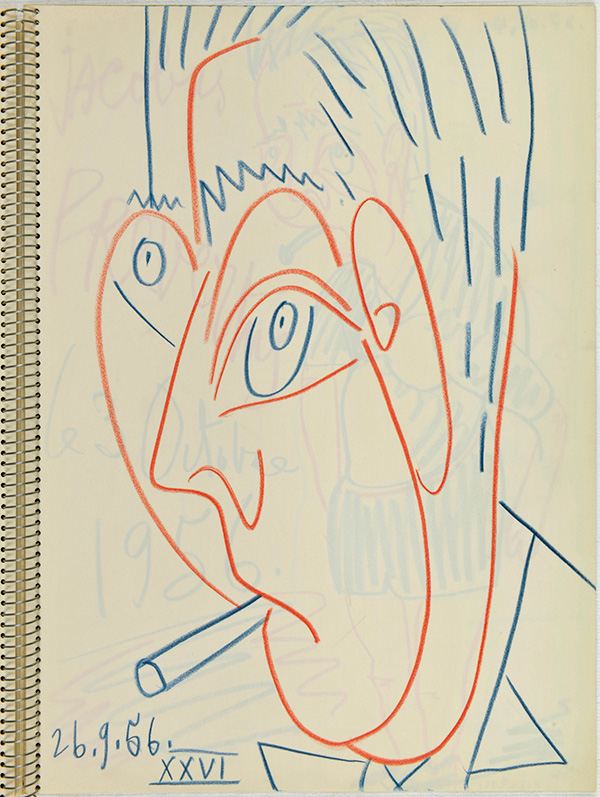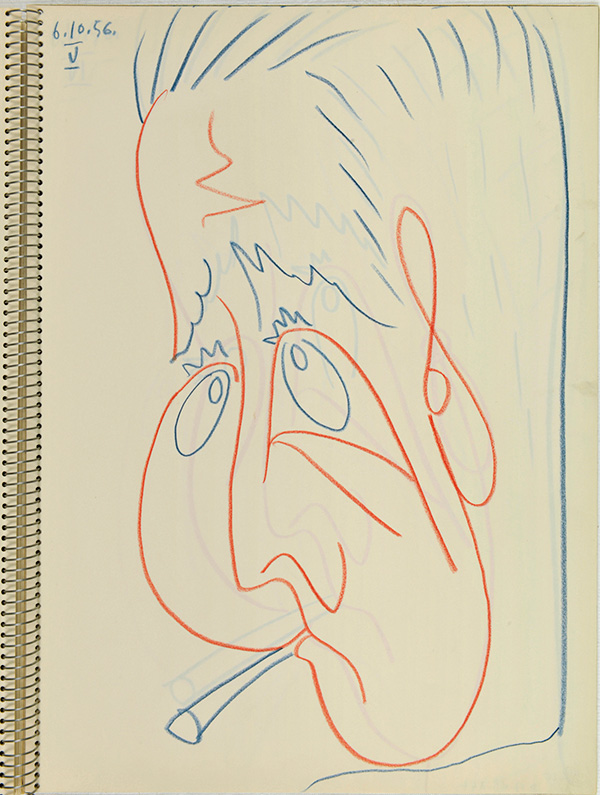... and remain faithful to the fight against injustice and oppression
Although both had stepped back from their militant political commitments, they remained true to their clearly defined ideas, relentlessly denouncing brutality and injustice while marveling at the charm of a child or a beautiful form. Prévert’s inspiration was the defense of the working class against its exploiters; the hope of a just, fraternal society. “His favorite characters are always ordinary people. Because they were rarely shown in films from that period, they end up seeming like unique personalities [...]. He always portrays two worlds: that of the wealthy, ruthless bourgeois, and that of the workers, of ordinary people, lovers... And then you have his dialogues, which play with emotions, come straight from the heart with sincerity.”[1] The Picasso of Guernica rose up against the repression and oppression of the people. They both experienced suffering, sorrow and joy, misery but also hope, love, and beauty.
Prévert’s writing is simple and pared down, close to everyday speech –which does not belong to “the people” as much as to everyone– and subtly and intelligently mixed with sophisticated word play and mocking remarks. His poetic language allows for lyricism as well as sarcasm. As for Picasso, we know how sensitive he was to words and poetry, which he worked on just as he did with his visual pieces. The artist takes pleasure in language and engages the reader by giving his writings a highly personal dimension. He puts words together, without much concern about their accessibility to the reader. The two friends had different relationships to text and image, but their approaches were similar.
Picasso produced several portraits of Prévert, and had fun sketching him in one of his notebooks between September 26 and October 30, 1956, with a cigarette in his mouth, his eyes wide open in surprise, bushy eyebrows, a stern or sullen look, amused or sly, wearing shorts and named Jacobus Prevertus.[2]
From 1953 on, collage became a key element in their friendship. Jacques Prévert collected images that he picked up at the flea market or at the scrap metal stalls, or on his walks along the banks of the Seine, at the booksellers’, in fine editions, old magazines, and newspapers. Although his first known collage is from 1943, it was not until 1948, after the famous accident that prevented him from writing for some time, that he delved fully into this new form of artistic expression. Using unusual, striking, and curious juxtapositions, Jacques Prévert applied large doses of humor and vehemence to denounce issues such as the power of politics and of the Church, society, or the conditions of women, the oppressed, and animals.







 Summary
Summary